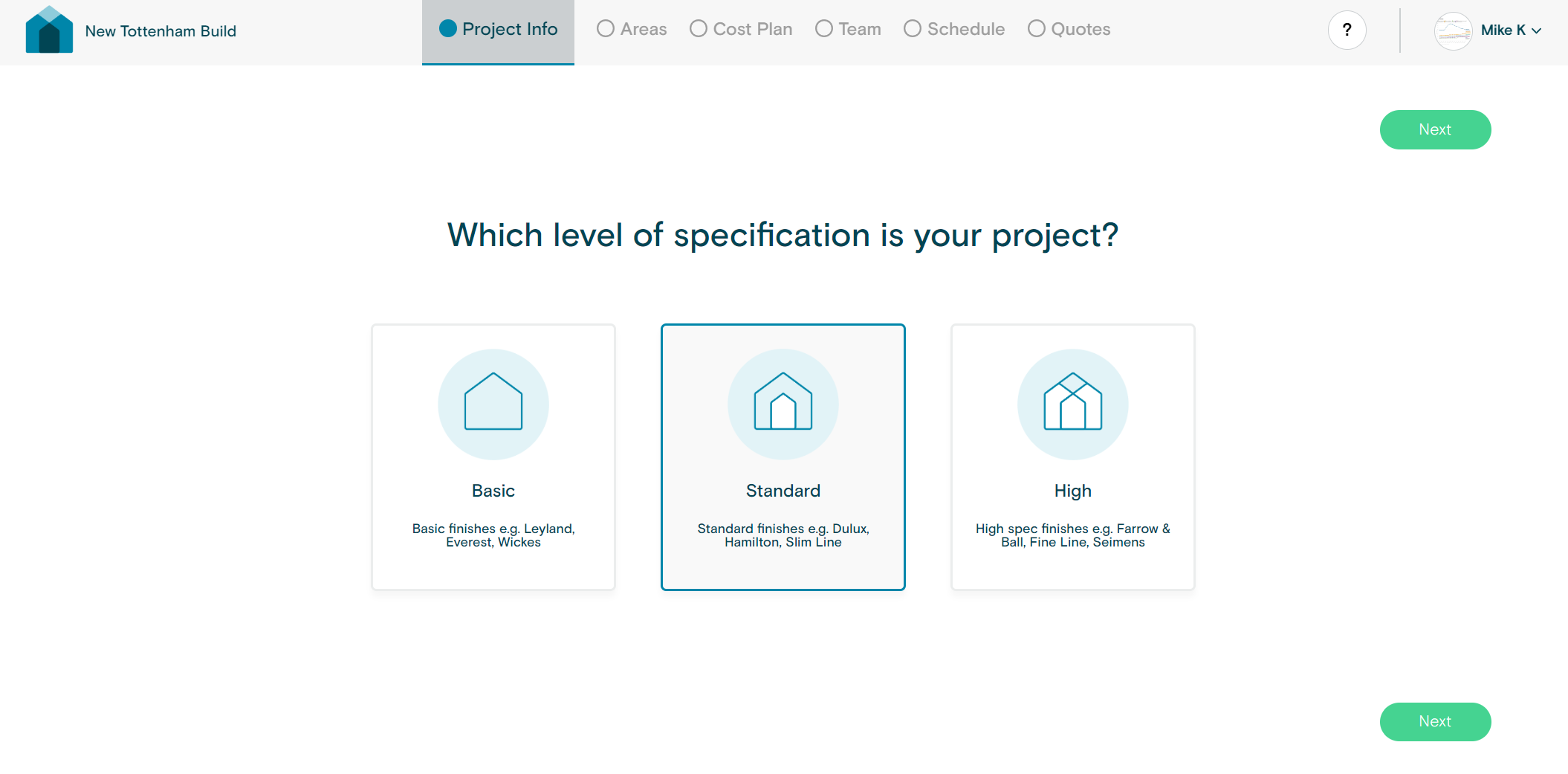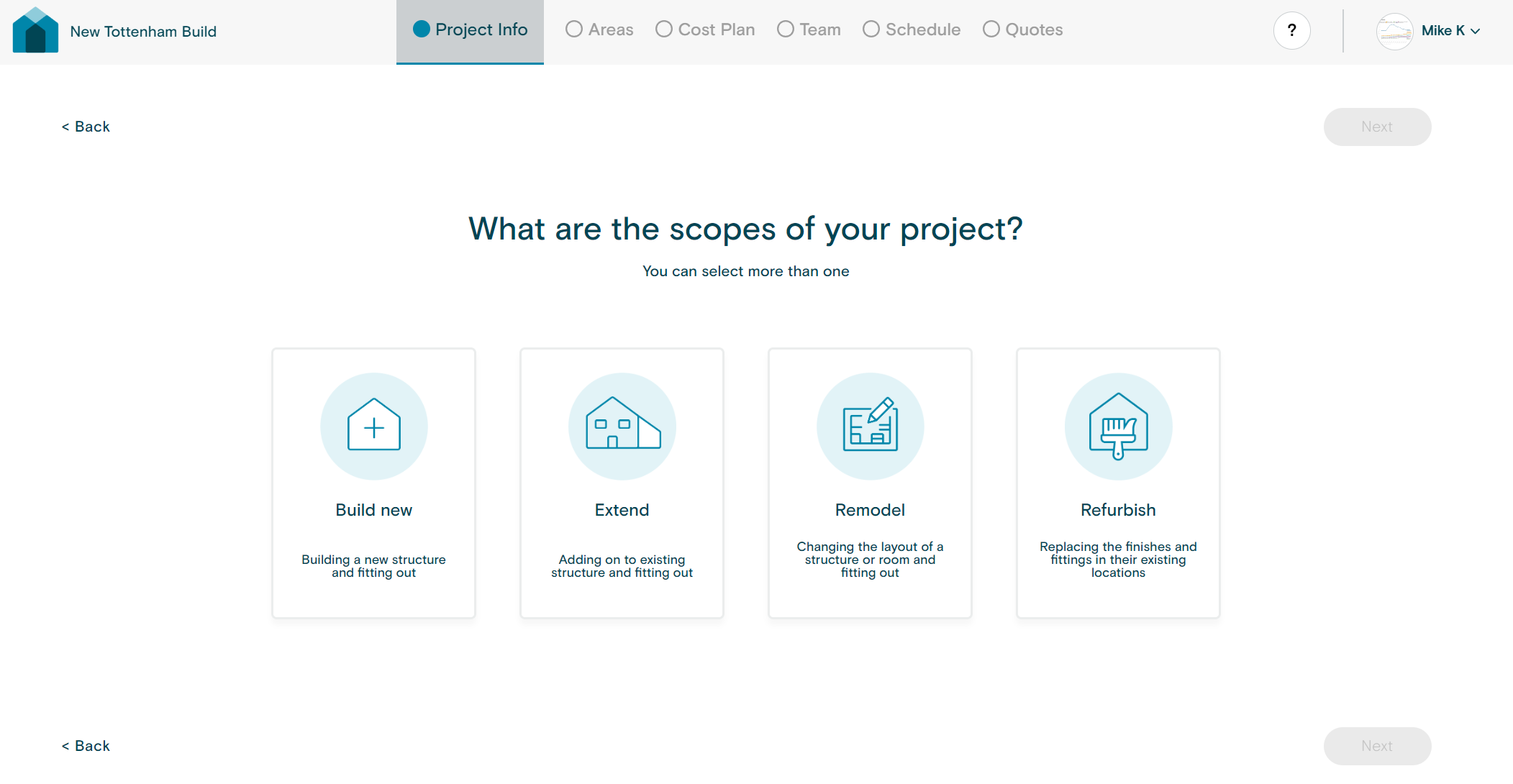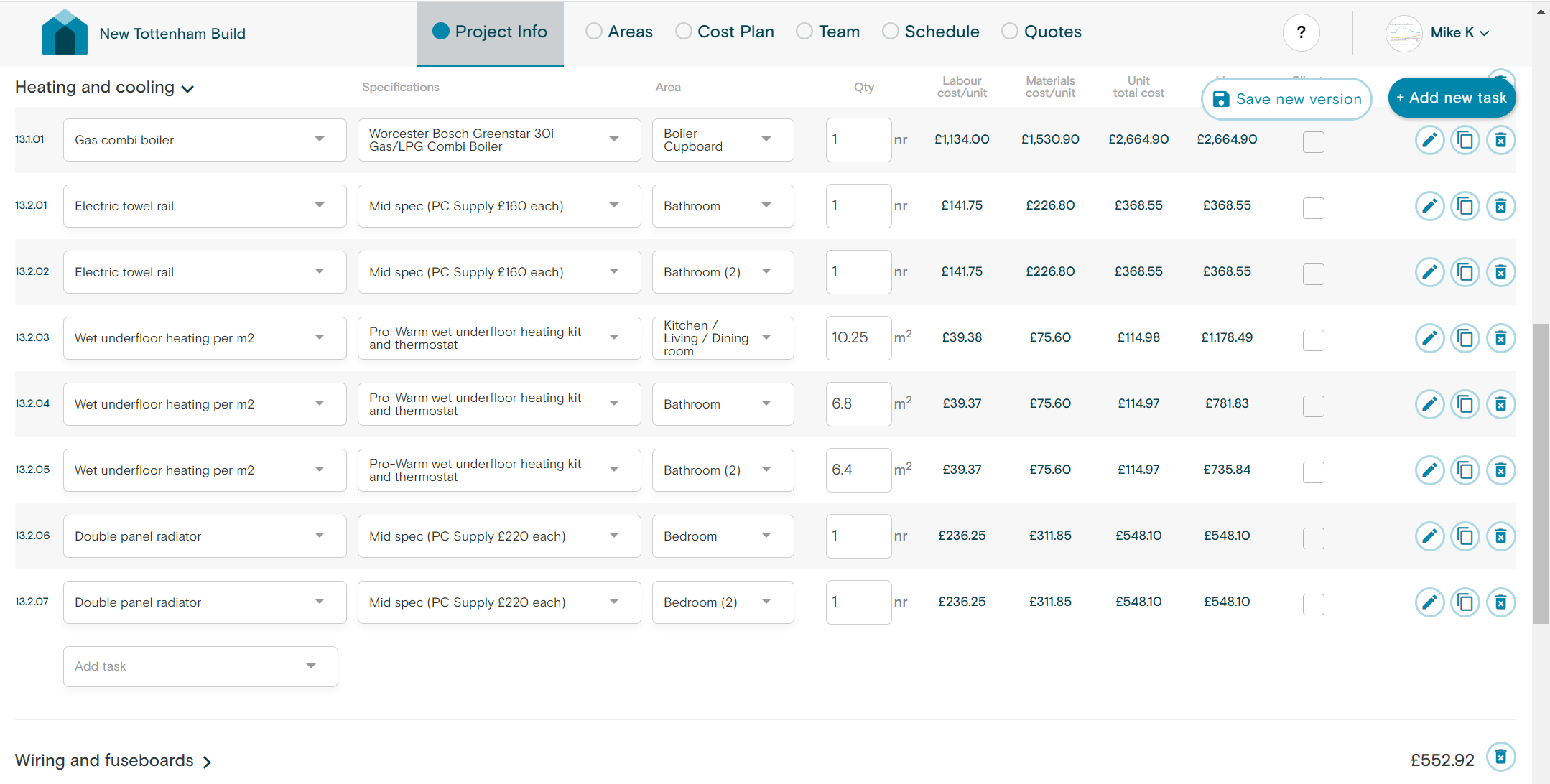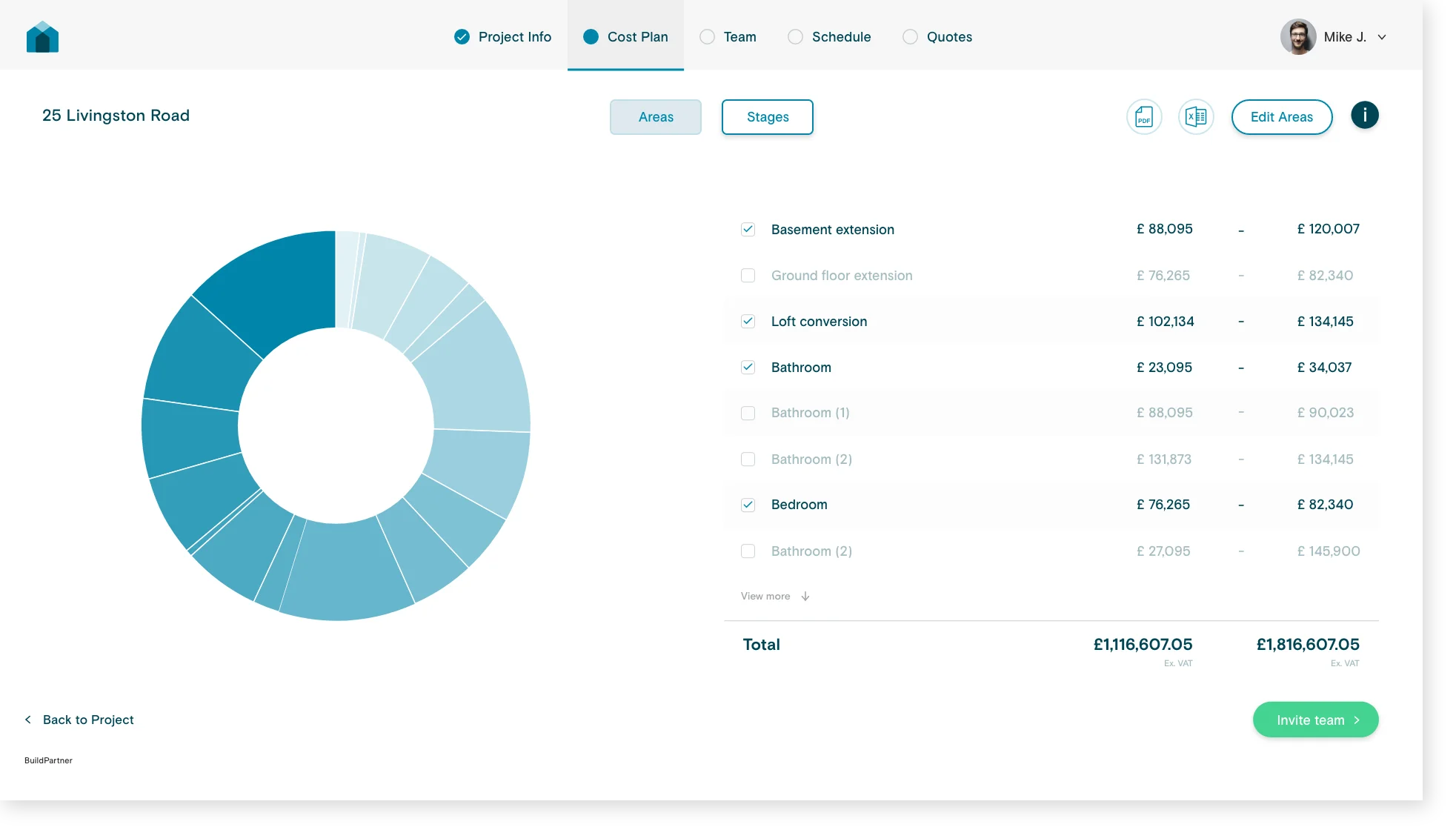Guide to Creating Accurate Construction Cost Plans
A detailed and accurate cost plan is a crucial element of effective construction management, facilitating budget control and project efficiency. As a continuation from our previous article about cost plans, we will delve deeper into how to construct comprehensive cost plans and illustrate how BuildPartner’s software can streamline this process for builders, architects, and project managers.
How to Create an Accurate Cost Plan?
Formulating an accurate cost plan is a detailed process involving meticulous understanding, calculation, and analysis. Here’s a more comprehensive look into the key steps:
1. Understand the Project Scope and Specifications
The starting point of an accurate cost plan involves a thorough comprehension of the project’s scope and specifications.
Different Scopes include:
- Basic – Including basic finishes e.g. Leyland, Everest, Wickes
- Standard – Including standard finishes e.g. Dulux, Hamilton, Slim Line
- High – High spec finishes e.g. Farrow & Ball, Fine Line, Seimens

Different Specifications include:
- New Build – Building a new structure and fitting out.
- Extend – Adding on to existing structure and fitting out.
- Remodel – Changing the layout of a structure or room and fitting out.
- Refurbish – Replacing the finishes and fittings in their existing locations.

Understanding the project’s intricacies, including the types of materials to be used, the complexity of the design, and the size of the project, enables you to provide precise cost estimates. This stage often involves engaging with the design team to get clarity on the specifics and working closely with stakeholders to understand their expectations.
2. Gather Detailed Cost Information
After developing a clear picture of the project’s scope, the next step involves gathering in-depth cost information for all project components. This entails estimating costs for materials, labor, equipment, and any other expenses, such as permits, licenses, or contingency funds. Make use of current market rates, supplier quotes, and historical cost data for similar projects to ensure the most accurate and up-to-date cost information.

3. Breakdown the Costs
Following the collection of cost information, categorize the costs into different sections such as material costs, labor costs, equipment costs, and administrative costs. This detailed cost breakdown helps in better understanding where the majority of the project funds will be utilized and aids in identifying potential areas for cost savings.
4. Include Contingencies
In spite of the most thorough planning, unexpected expenses can occur during a construction project. To prepare for such situations, it’s essential to include contingencies in your cost plan. A good rule of thumb is to reserve around 10-15% of the total cost for contingencies, although this can vary based on the project’s complexity and risk level.
5. Regularly Review and Update the Cost Plan
As the project progresses, it’s important to continually review and update your cost plan. This involves tracking actual expenditures against your initial estimates, analyzing any discrepancies, and making necessary adjustments. Regular updates ensure your cost plan remains an accurate reflection of the project’s financial status and allows for more proactive budget management.
6. Estimate Profits
Part of your cost plan should also involve estimating the potential profits from the project. This is typically calculated by subtracting the estimated total costs from the total projected revenue. Estimating profits helps assess the project’s financial viability and inform decision-making processes.
7. Leverage BuildPartner’s Automated Cost Plans
To enhance the cost planning process, BuildPartner’s automated cost plan tool can be employed. This software automatically produces a detailed cost plan based on your project specifications and the most recent UK material costs, drastically reducing your workload and minimizing potential human error.

In summary, developing an accurate cost plan is a multifaceted process that requires a deep understanding of the project, meticulous data collection, and regular updating. By utilizing BuildPartner’s software, this process can be greatly simplified, enhancing overall project management efficiency. To learn more about how BuildPartner can optimize your cost planning process, visit buildpartner.com.

